The AMD Ryzen Threadripper 1950X and 1920X Review: CPUs on Steroids
by Ian Cutress on August 10, 2017 9:00 AM ESTRise of the Tomb Raider (1080p, 4K)
One of the newest games in the gaming benchmark suite is Rise of the Tomb Raider (RoTR), developed by Crystal Dynamics, and the sequel to the popular Tomb Raider which was loved for its automated benchmark mode. But don’t let that fool you: the benchmark mode in RoTR is very much different this time around.
Visually, the previous Tomb Raider pushed realism to the limits with features such as TressFX, and the new RoTR goes one stage further when it comes to graphics fidelity. This leads to an interesting set of requirements in hardware: some sections of the game are typically GPU limited, whereas others with a lot of long-range physics can be CPU limited, depending on how the driver can translate the DirectX 12 workload.
Where the old game had one benchmark scene, the new game has three different scenes with different requirements: Spine of the Mountain (1-Valley), Prophet’s Tomb (2-Prophet) and Geothermal Valley (3-Mountain) - and we test all three (and yes, I need to relabel them - I got them wrong when I set up the tests). These are three scenes designed to be taken from the game, but it has been noted that scenes like 2-Prophet shown in the benchmark can be the most CPU limited elements of that entire level, and the scene shown is only a small portion of that level. Because of this, we report the results for each scene on each graphics card separately.
Graphics options for RoTR are similar to other games in this type, offering some presets or allowing the user to configure texture quality, anisotropic filter levels, shadow quality, soft shadows, occlusion, depth of field, tessellation, reflections, foliage, bloom, and features like PureHair which updates on TressFX in the previous game.
Again, we test at 1920x1080 and 4K using our native 4K displays. At 1080p we run the High preset, while at 4K we use the Medium preset which still takes a sizable hit in frame rate.
It is worth noting that RoTR is a little different to our other benchmarks in that it keeps its graphics settings in the registry rather than a standard ini file, and unlike the previous TR game the benchmark cannot be called from the command-line. Nonetheless we scripted around these issues to automate the benchmark four times and parse the results. From the frame time data, we report the averages, 99th percentiles, and our time under analysis.
All of our benchmark results can also be found in our benchmark engine, Bench.
#1 Geothermal Valley Spine of the Mountain
MSI GTX 1080 Gaming 8G Performance
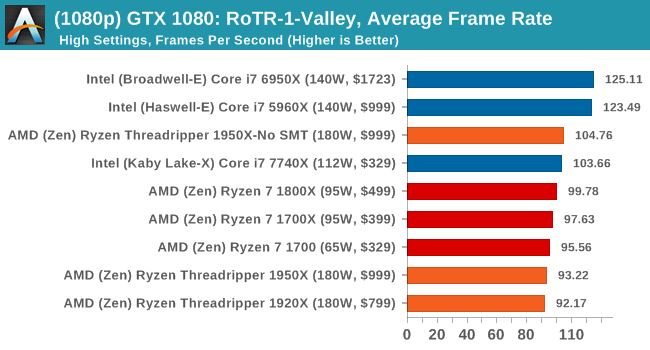
1080p

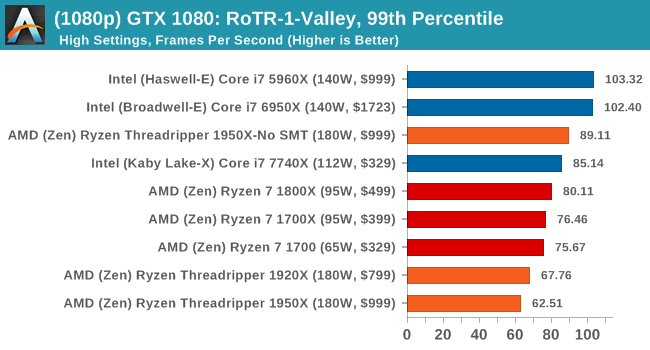
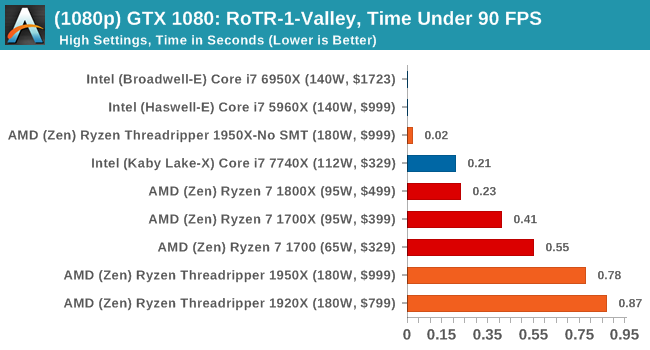
4K

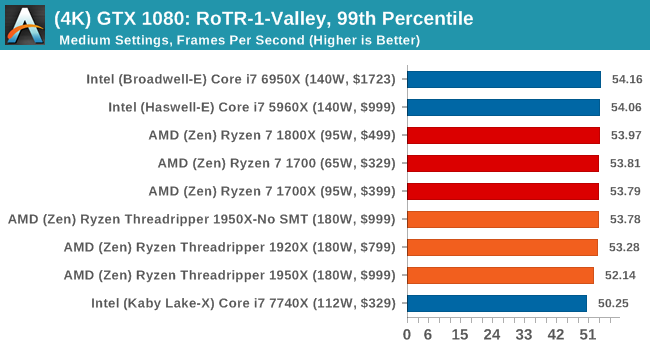
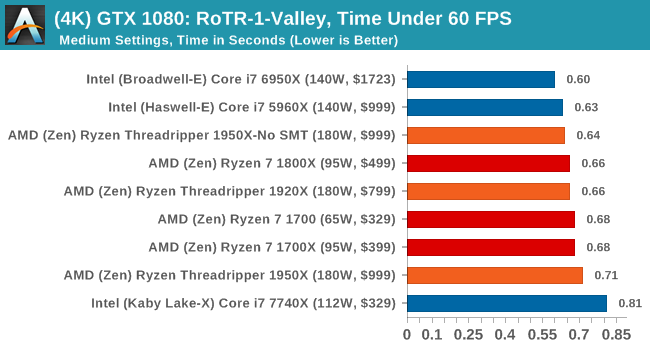
ASUS GTX 1060 Strix 6G Performance

1080p

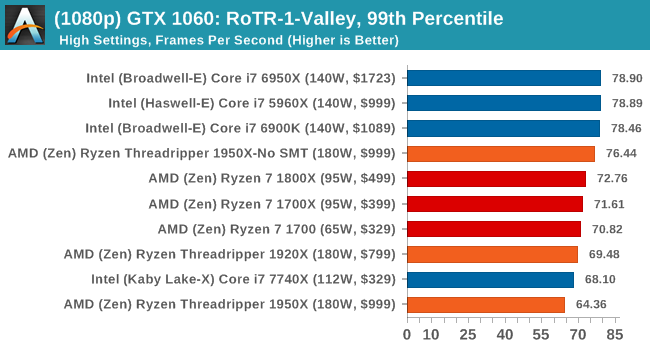
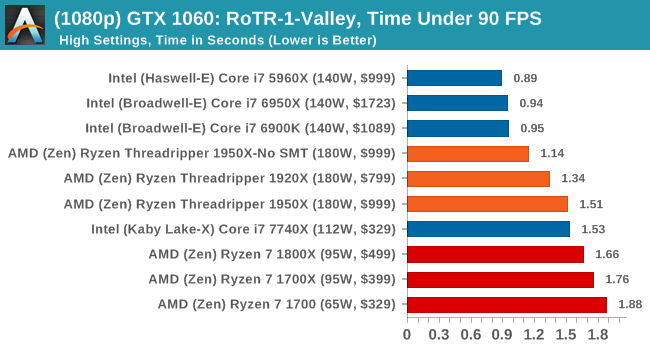
4K
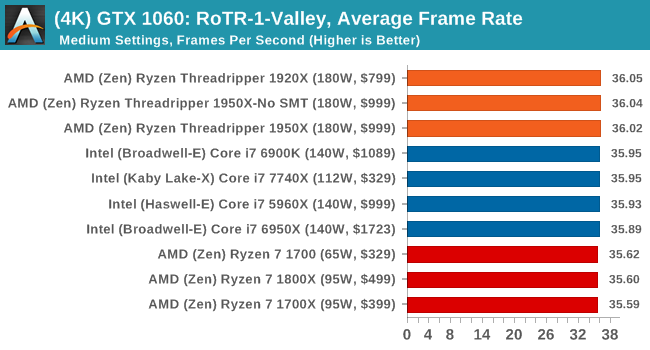


Sapphire Nitro R9 Fury 4G Performance
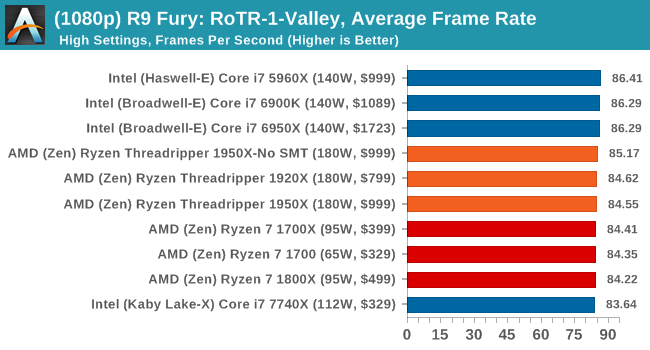
1080p

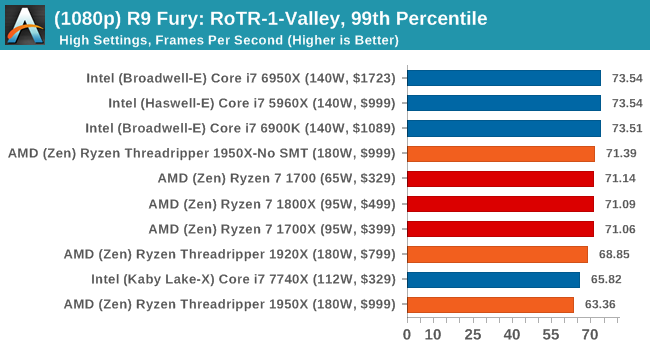
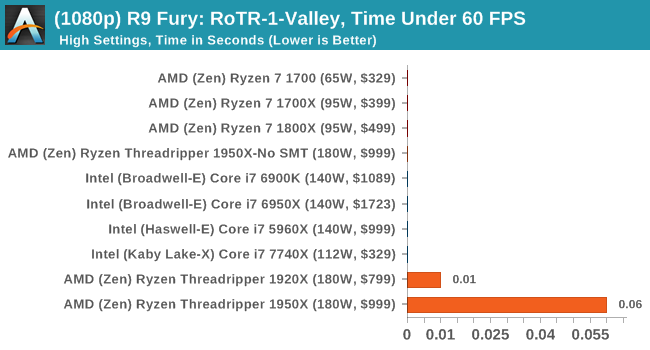
4K
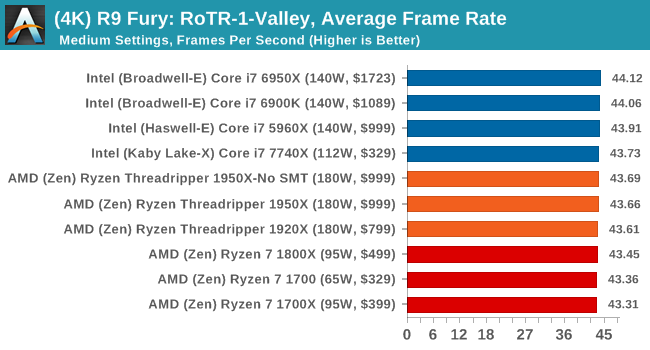
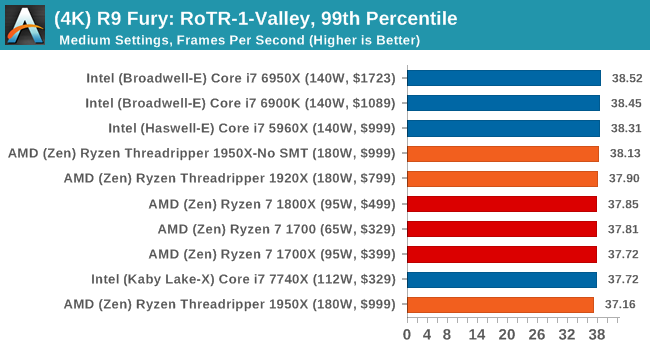
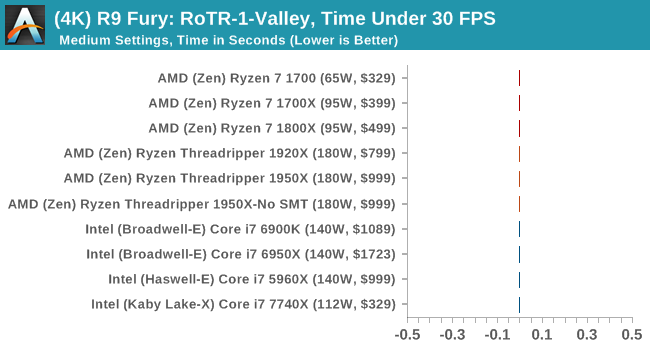
Sapphire Nitro RX 480 8G Performance

1080p

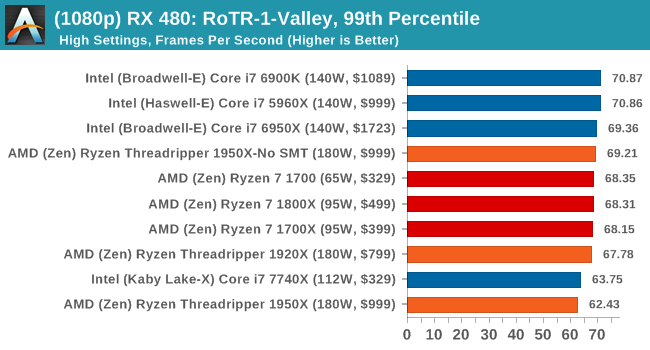
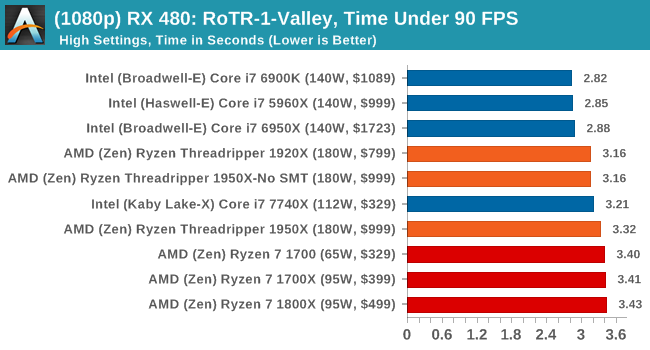
4K
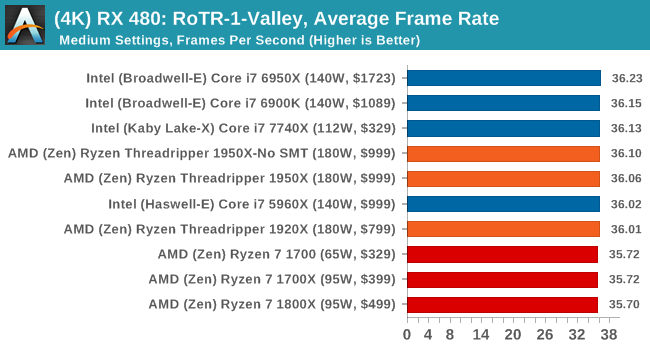
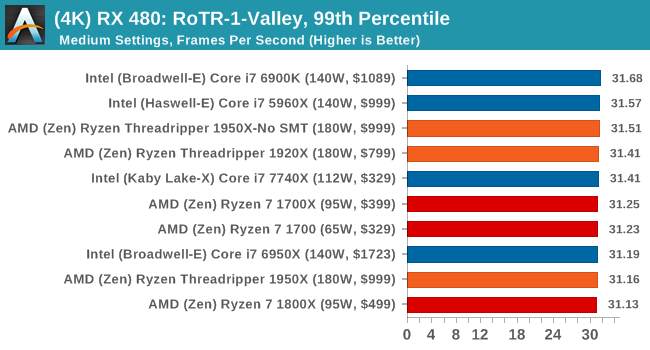
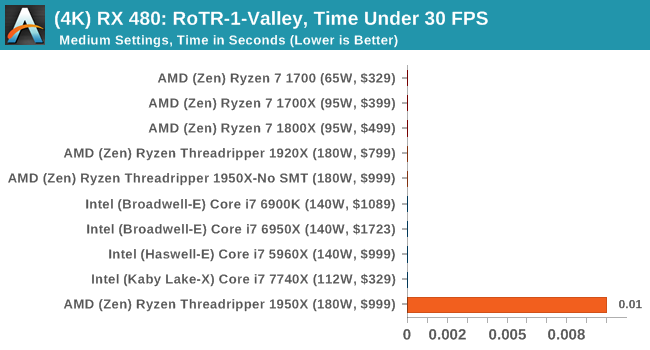
#2 Prophet’s Tomb
MSI GTX 1080 Gaming 8G Performance
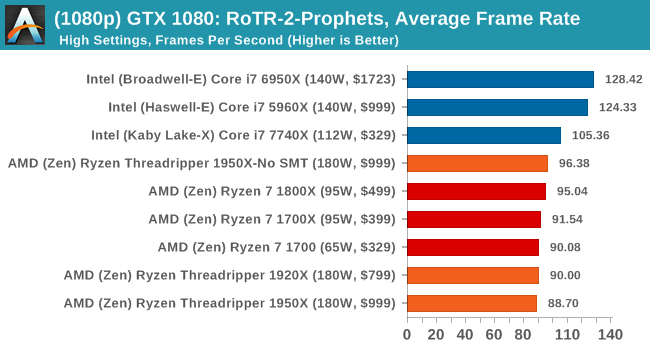
1080p

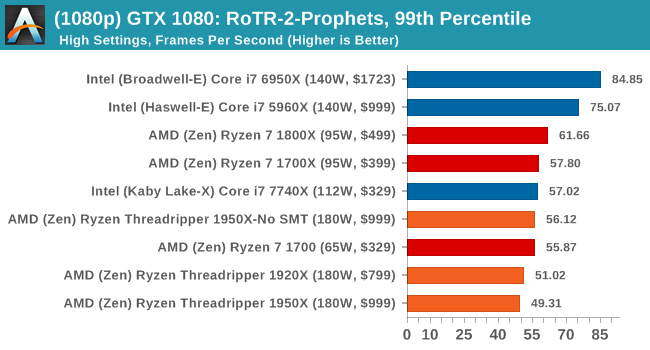
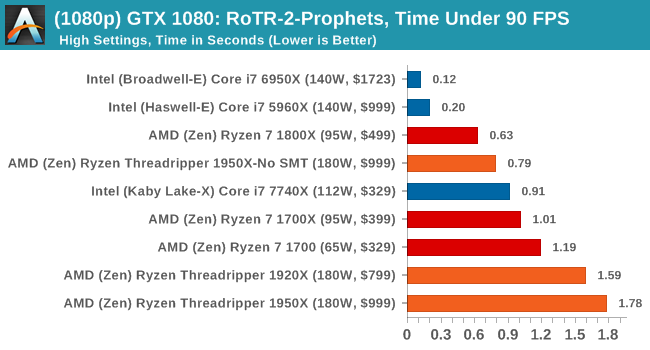
4K
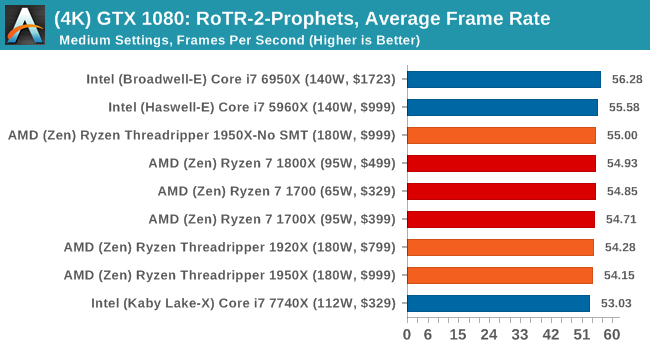
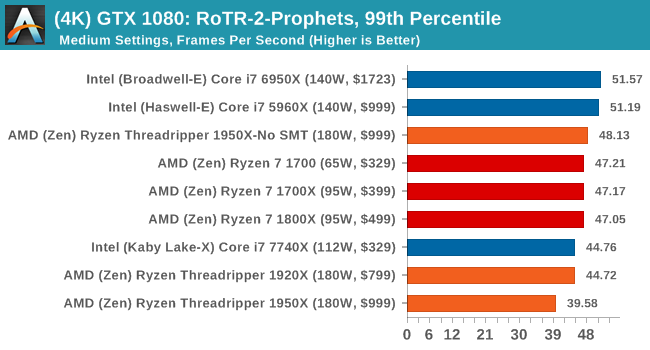
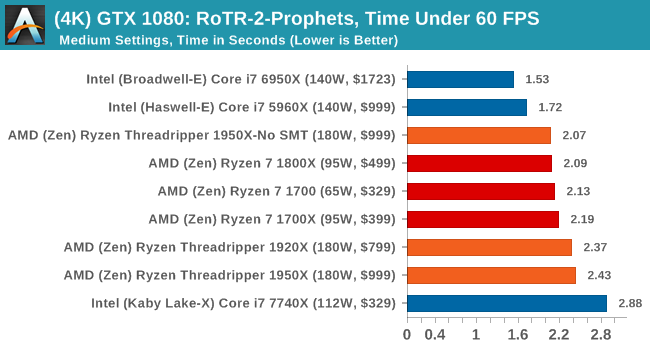
ASUS GTX 1060 Strix 6G Performance
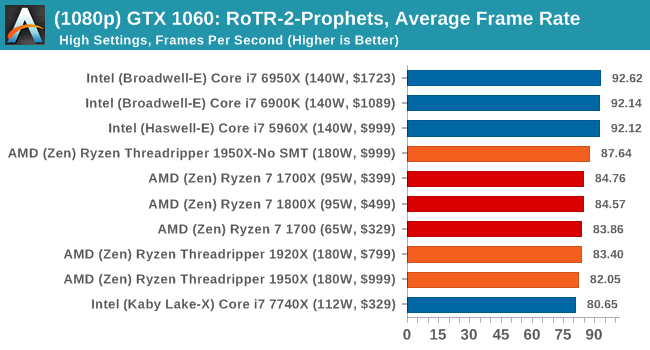
1080p

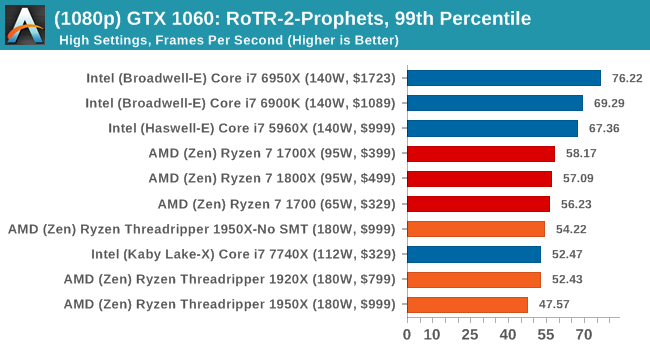
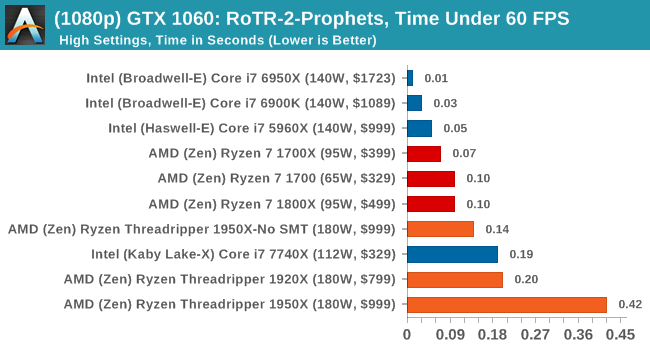
4K
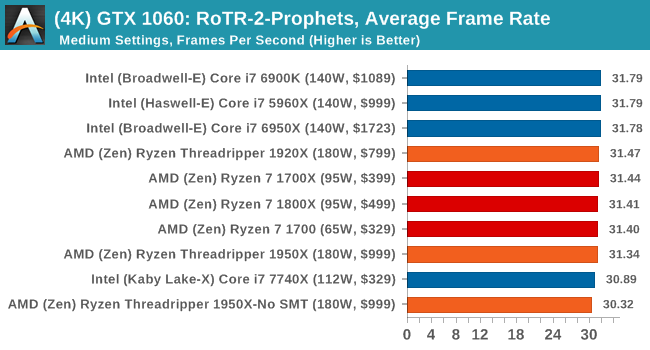

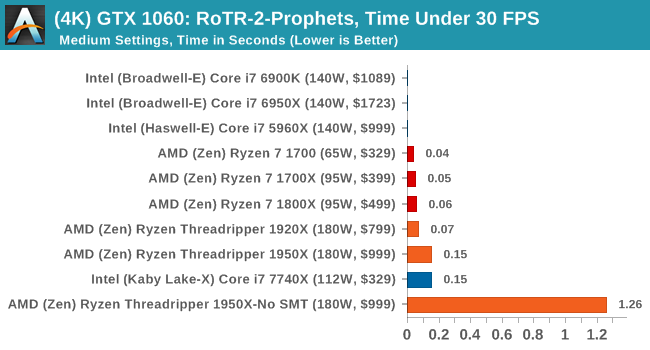
Sapphire Nitro R9 Fury 4G Performance
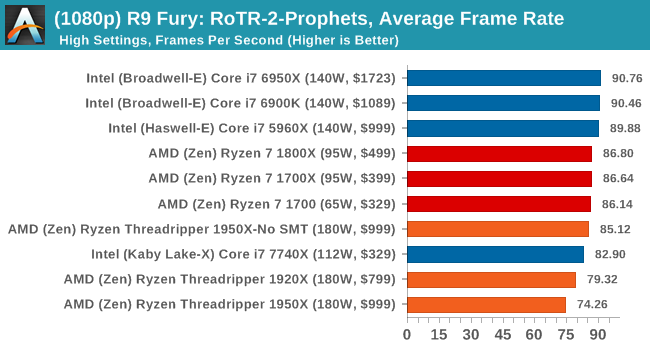
1080p

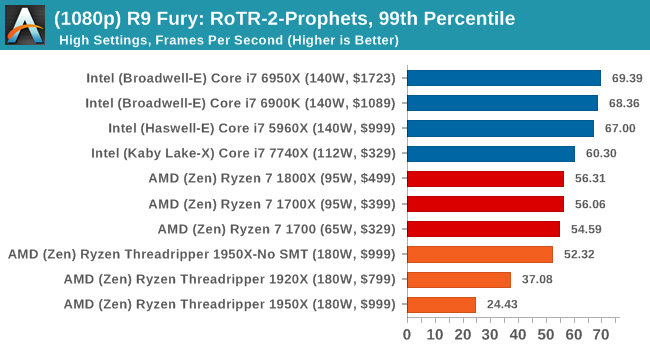
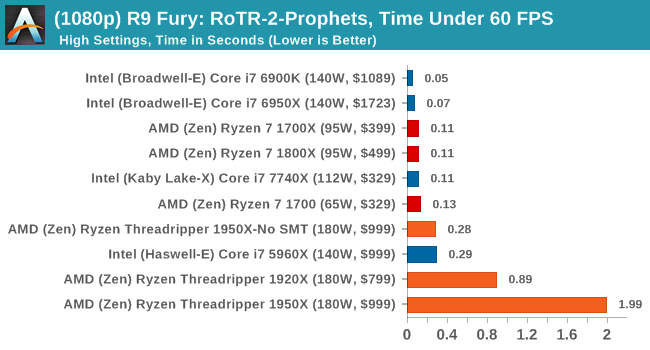
4K
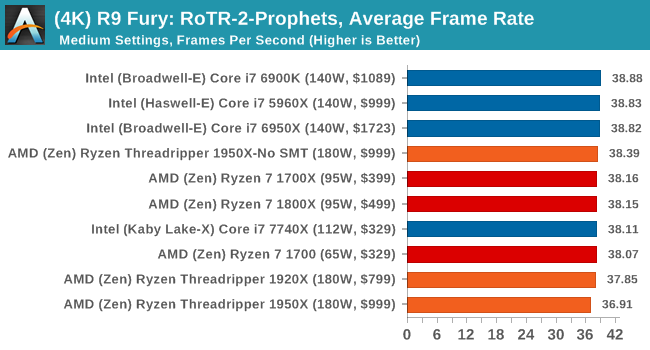
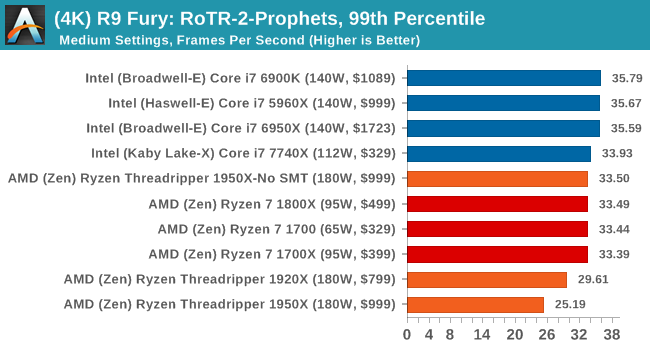

Sapphire Nitro RX 480 8G Performance
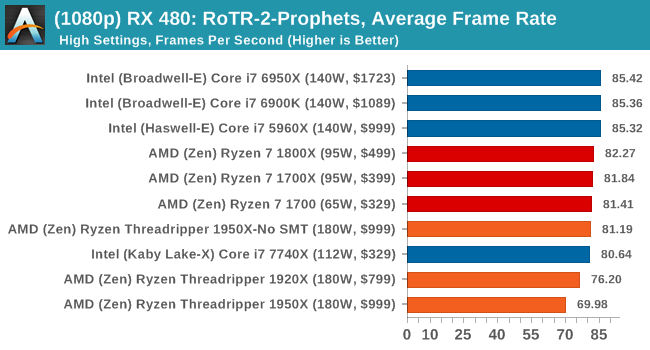
1080p

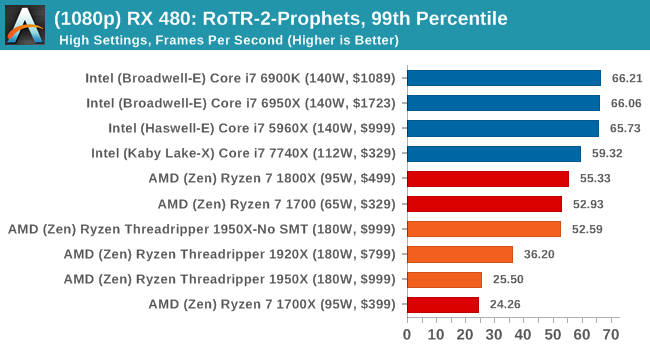
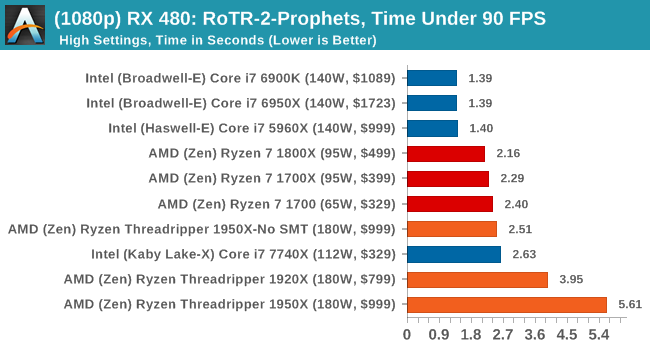
4K
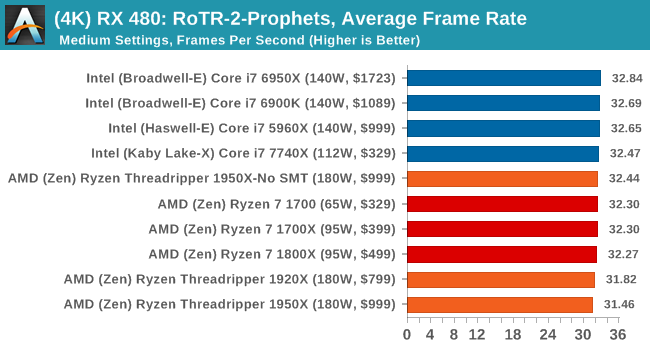
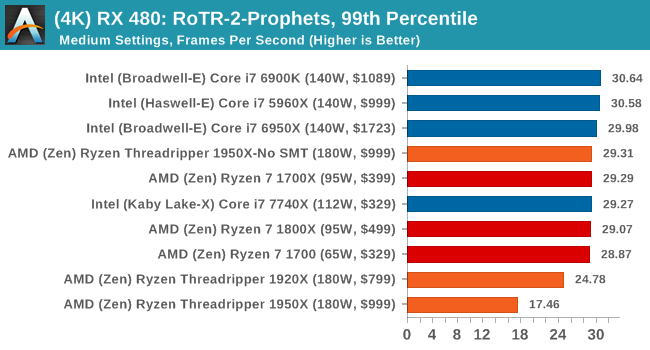
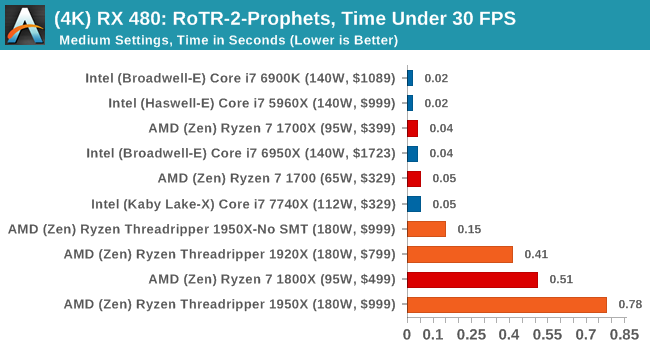
#3 Spine of the Mountain Geothermal Valley
MSI GTX 1080 Gaming 8G Performance
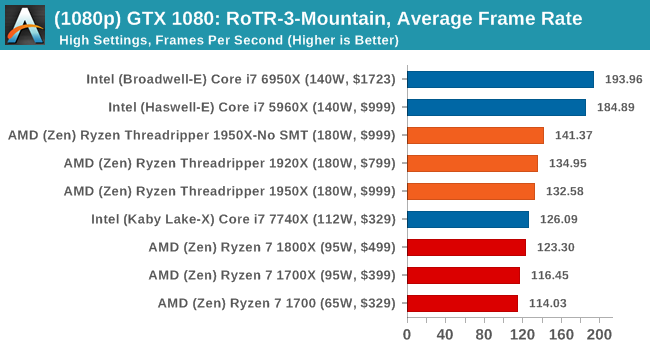
1080p

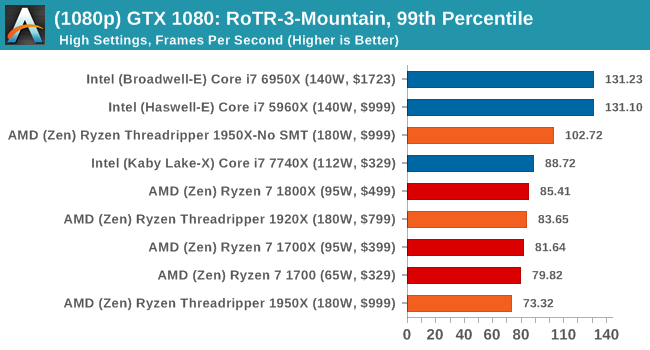
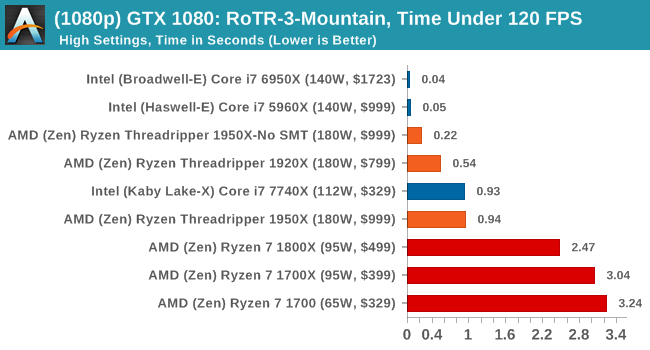
4K
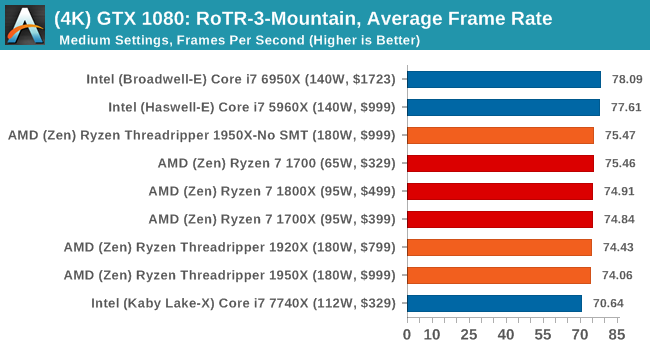
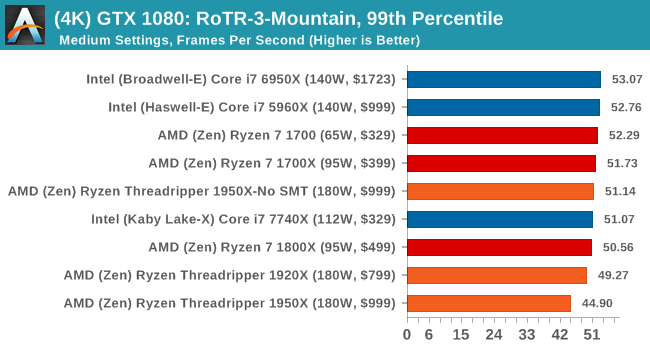
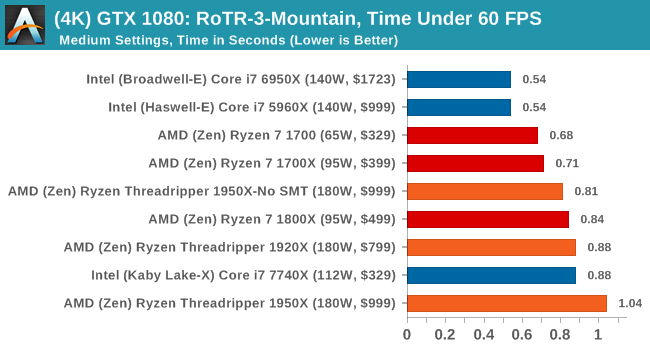
ASUS GTX 1060 Strix 6G Performance
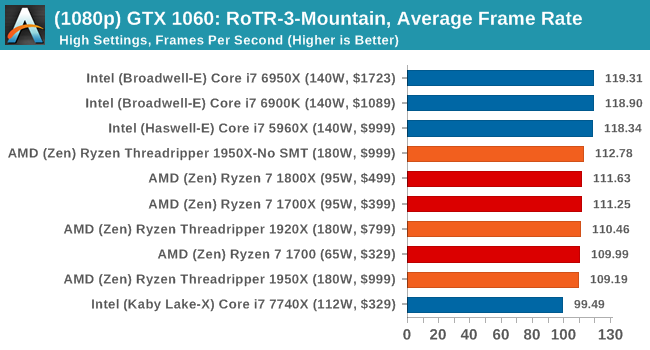
1080p

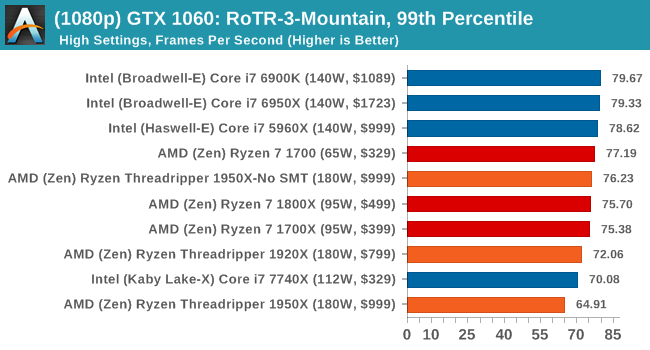

4K
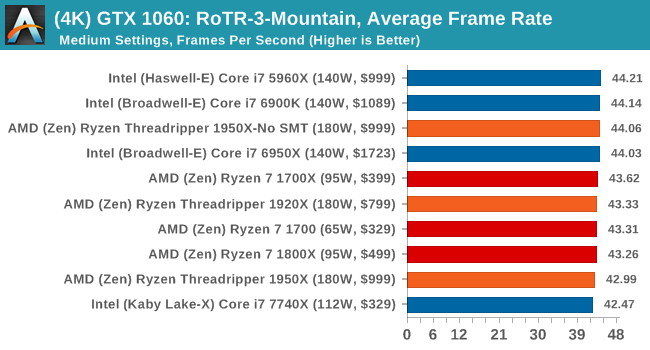
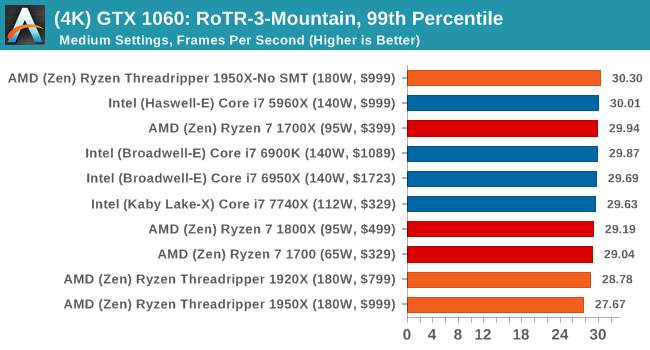

Sapphire Nitro R9 Fury 4G Performance
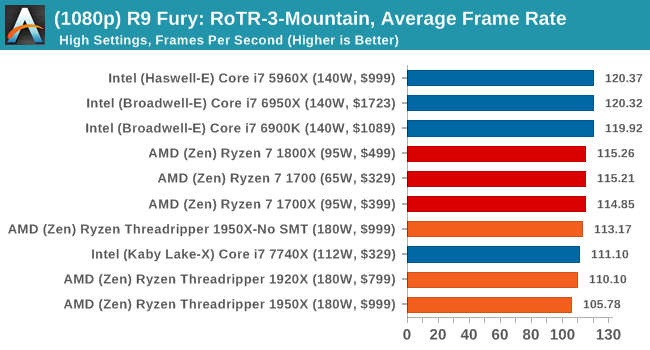
1080p


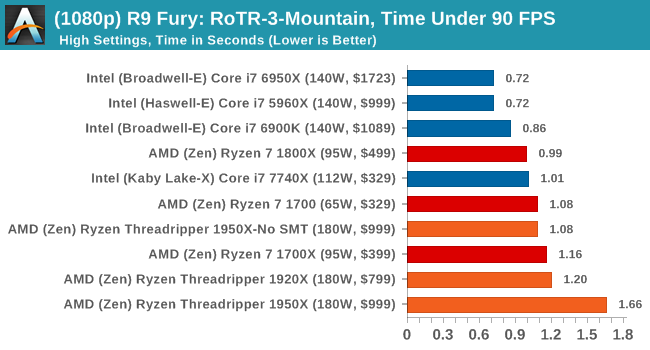
4K
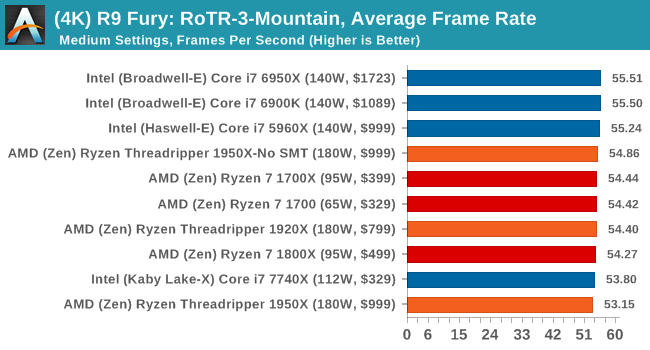
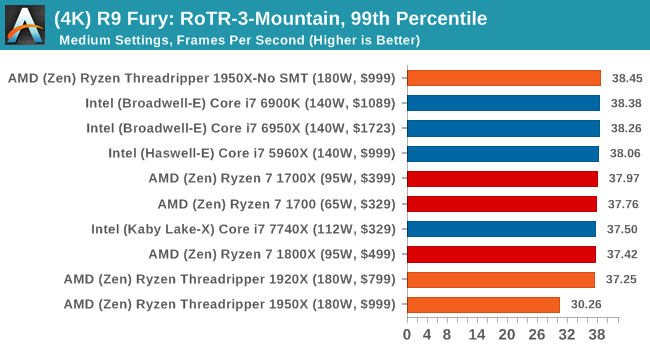
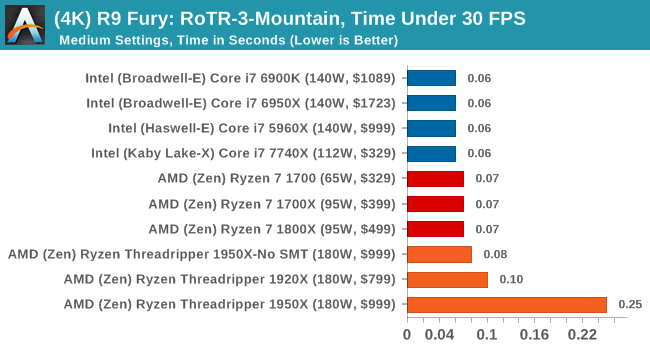
Sapphire Nitro RX 480 8G Performance
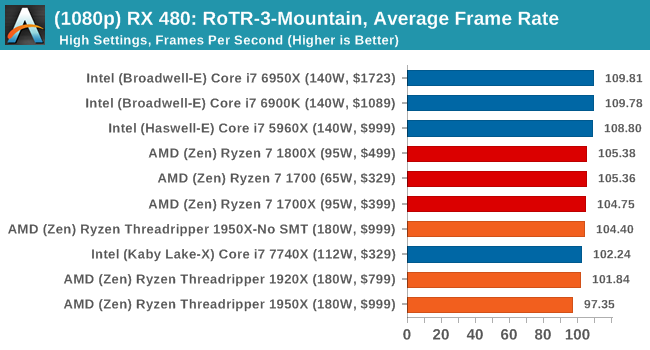
1080p

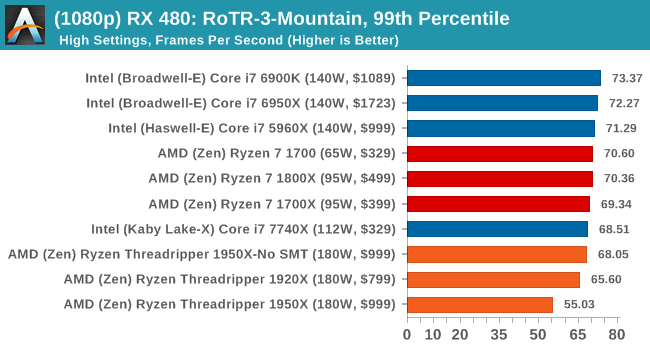
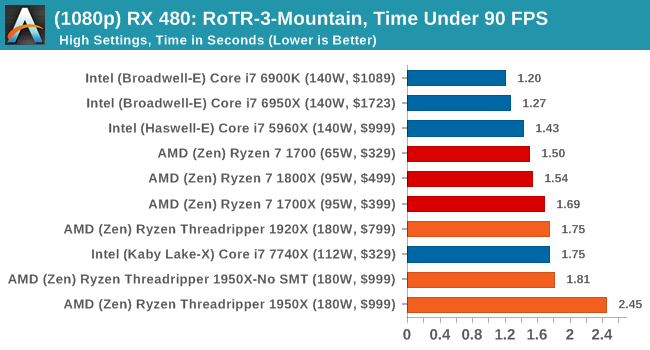
The 4K
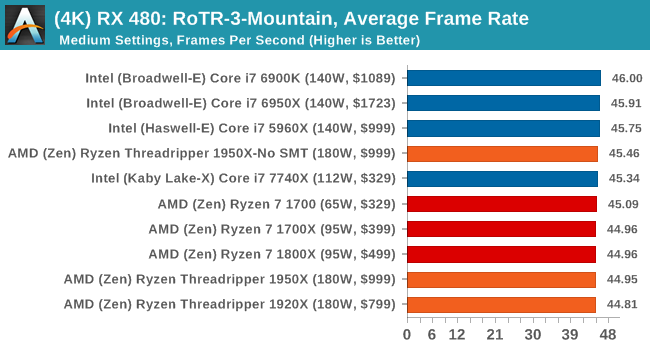
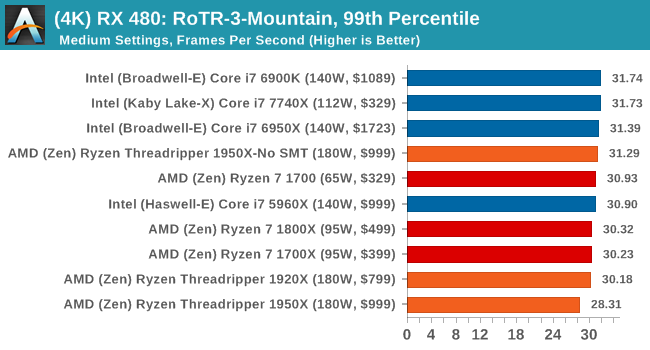
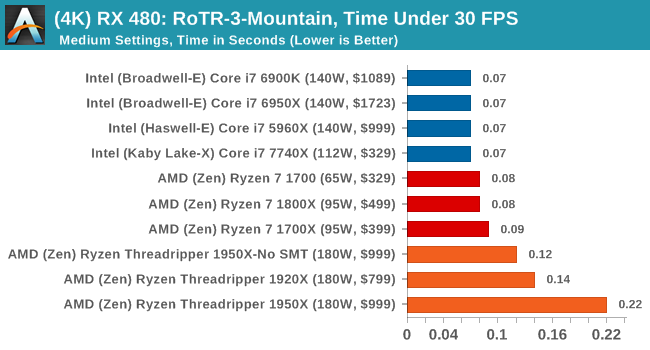
It's clear from these results that the 1950X is not the best gaming chip when in its default mode.




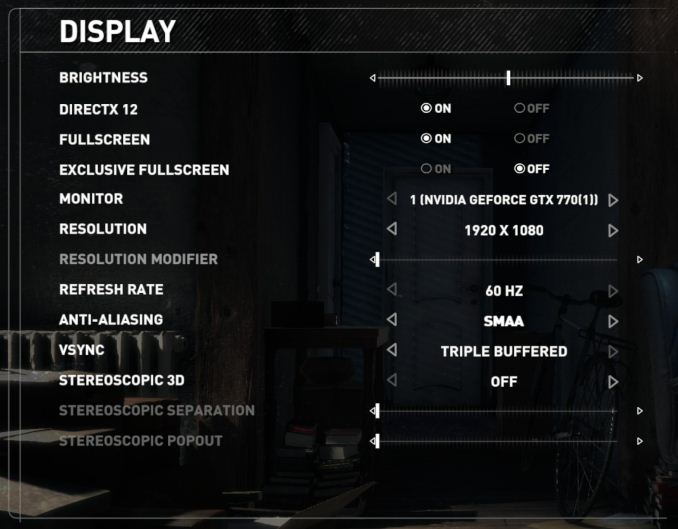











347 Comments
View All Comments
ddriver - Thursday, August 10, 2017 - link
Yeah if all you do all day is compile chromium with visual studio... Take that result with a big spoon of salt.Samus - Thursday, August 10, 2017 - link
This thing can also decompress my HD pr0n RARs in record time!carewolf - Thursday, August 10, 2017 - link
The jokes is on you. More cores and more memory bandwidth is always faster for compiling. Anandtech must have butched the benchmark here. Other sites show ThreadRipper whipping i9 ass as expected.bongey - Thursday, August 10, 2017 - link
They did without a doubt screw up the compile test. The 6950x is a 10 core /20 thread intel cpu, but somehow the 7900x has 20% improvement, when no other test even comes close to that much of an improvement. The 7900x is basically just bump in clock speed for a 6950x.Ian Cutress - Thursday, August 10, 2017 - link
'The 7900X is basically just bump in clock speed for a 6950X'L2 cache up to 1MB, L3 cache is a victim cache, mesh interconnect rather than rings.
mlambert890 - Saturday, August 12, 2017 - link
It's basically as far from 'just a bump in clock speed' as any follow up release short of a full architecture revamp, but yeah ok.rtho782 - Thursday, August 10, 2017 - link
The whole game mode/creator mode, UMA/NUMA, etc seems a mess. Games not working with more than 20 threads is a joke although not AMDs fault....mapesdhs - Thursday, August 10, 2017 - link
Why is it a mess if peope choose to buy into this level of tech? It's bring formerly Enterprise-level tech to the masses, the very nature of how this stuff works makes it clear there are tradeoffs in design. AMD is forced to start off by dealing with a sw market that for years has focused on the prevalence of moderately low core count Intel CPUs with strong(er) IPC. Offering a simple hw choice to tailor the performance slant is a nice idea. I mean, what's your problem here? Do you not understand UMA vs. NUMA? If not, probably shouldn't be buying this level of tech. :DprisonerX - Thursday, August 10, 2017 - link
That will change. Why invest masses of expensive brainpower in aggressively multithreading your game or app when no-one has the hardware to use it? No they do.Hurr Durr - Friday, August 11, 2017 - link
Only in lala-land will HEDT processors occupy any meaningful part of the gaming market. We`re bound by consoles, and that is here to stay for years.